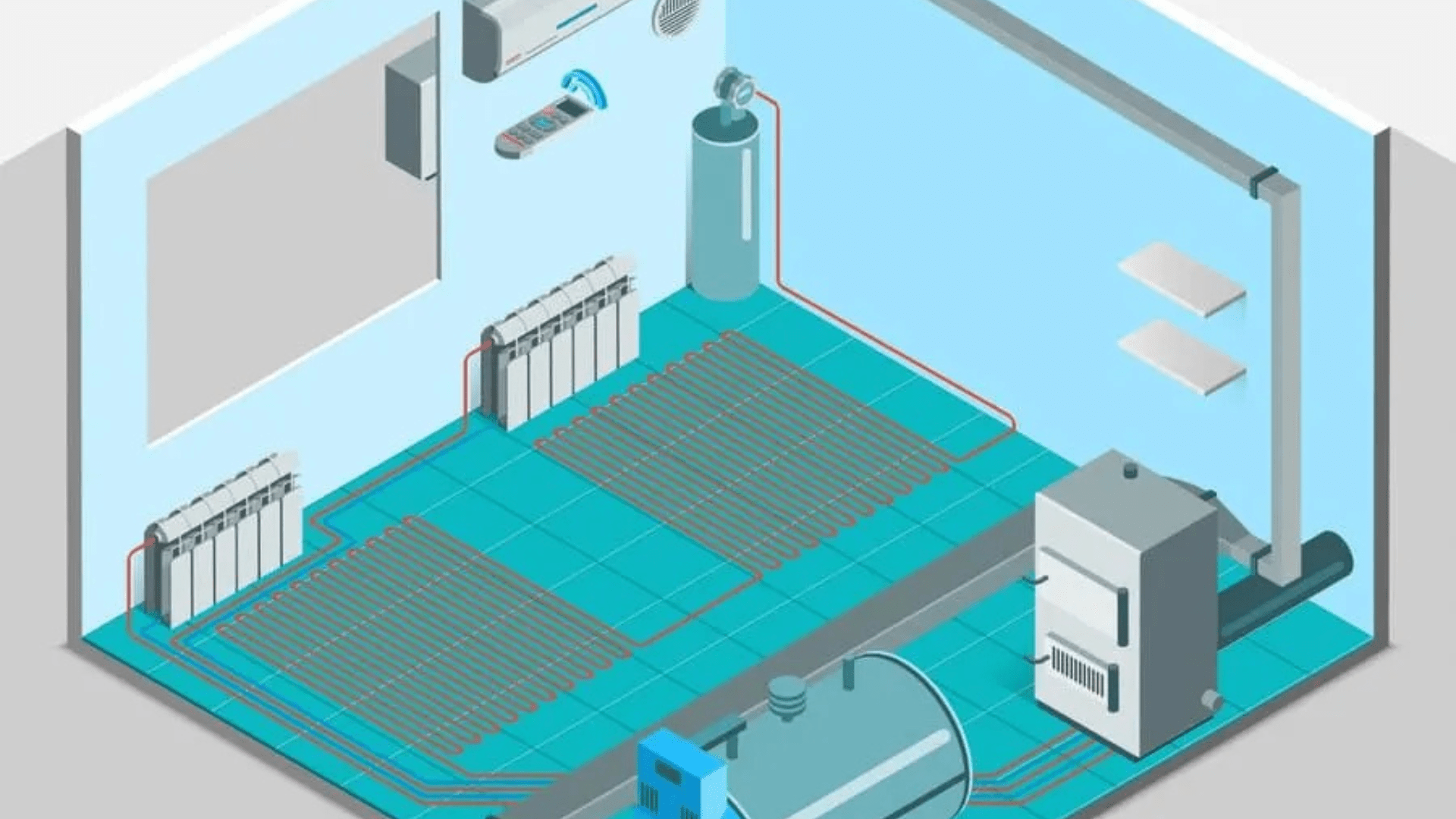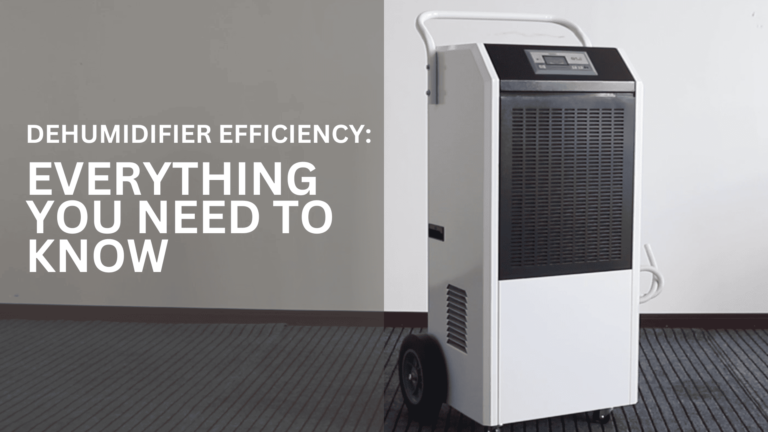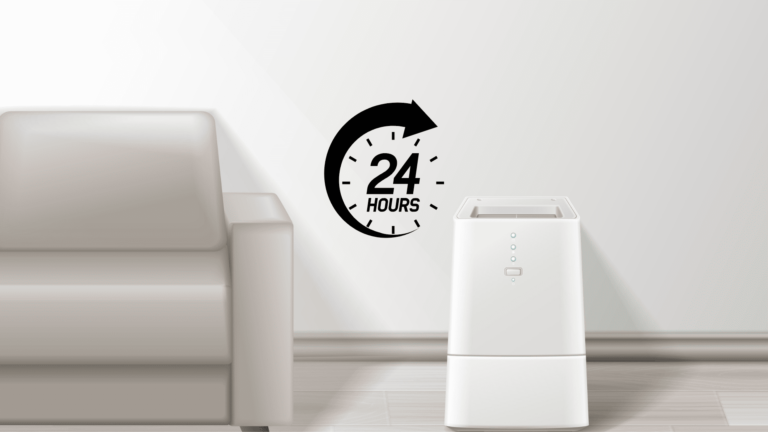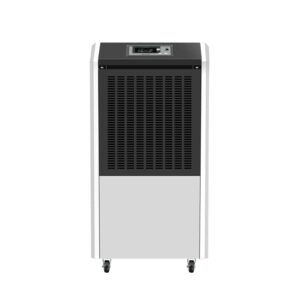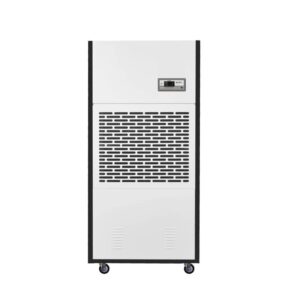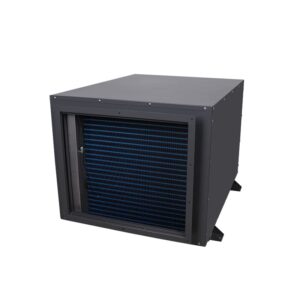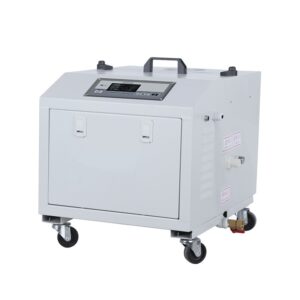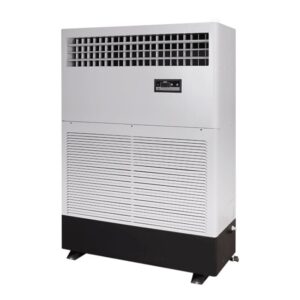Basement is one of the vulnerable areas of your home which is prone to get damp and mold. Choosing the right basement ventilation system is very crucial considering the fact. There are plenty of ways to get proper ventilation for your basement. Yet not all of them are appropriate for all basement types.
Today in this discussion, I’ll let you know how you should choose the right basement ventilation system. Without further ado, let’s get started!

What is Basement Ventilation and Why Is It Important?
Basement ventilation is the process that allows your basement to get a proper airflow, ensuring a healthy environment for your basement. The overall arrangement will allow your basement to get rid of mold, musty odor, and dampness.
Besides making your basement healthy, a proper basement ventilation system will let you enjoy the following benefits-
- Reduces Humidity Levels
- Prevents Pest Infestation
- Improves Air Quality
- Controls Radon Gas
- Prevents Structural Damage
- Extends the Lifespan of Your Basement
- Increases Property Value
- Prevents Mold and Mildew Growth
How to Identify if Your Basement Needs Ventilation Upgrades
When your home was built, a small ventilator was installed in the basement to help eliminate the damp air inside. Even though it seems good, this small window-like thing doesn’t work effectively, especially when the size of your basement is big.
Now the question is – how to identify if your basement needs ventilation upgrades or not?
Here is the list of steps for you-
Step 1- Check for Dampness or Moisture:
If your basement is damped or the moisture level is not normal, you can feel it on your own. You can use a hygrometer to get the precise data. If the humidity level is not between 30% and 50%, you should pay your attention to bring it back to the optimal level. And this is a big sign that the existing ventilation system of your basement needs an upgrade.
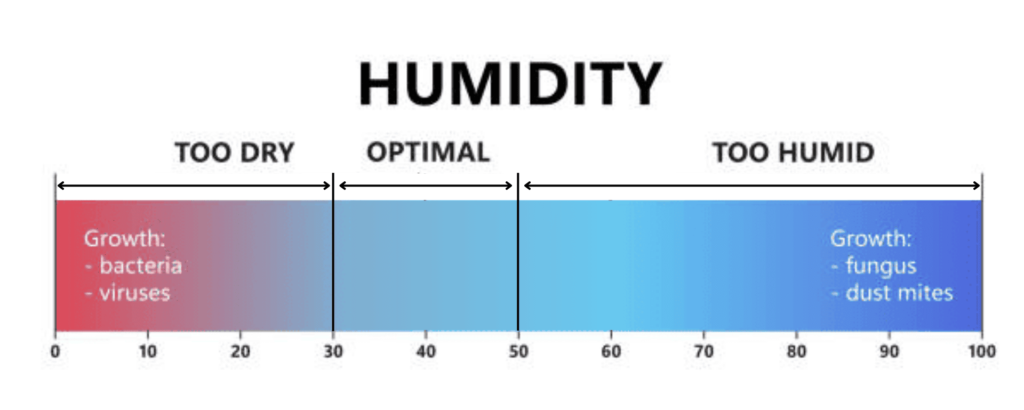
Step 2- Look for Signs of Mold and Mildew
Mold and mildew grow only in damp weather. Check the floor and walls of your basement to see if there are any signs of mold or mildew. Especially check the corners, as such areas are prone to mold growth. If they are present, it means moisture is trapped in your basement due to the poor ventilation system.
Step 3- Monitor the Temperature
Warm air can hold more moisture, so check the current temperature of your basement. The normal temperature for your basement should be between 60°F and 70°F (15°C to 21°C). If you live in a summer-dominant country, around 25°C is fine. However, if the temperature exceeds this limit, it’s time to check the ventilation system in your basement.
Step 4- Look for Water Stains and Rust on Pipes
The existence of water stains in your basement means that either water is leaking from the pipe or the moisture-laden air can’t leave your basement due to the poor ventilation system. For the same reason, the metal pipes in your basement can also catch rust. If such signs exist, it’s a strong indication that the humidity in your basement is abnormal. Therefore, you need to upgrade your basement ventilation system.
Step 5- Monitor Your Energy Bills
If the natural ventilation system of your basement is good, the moisture level will remain in an optimal state. Sometimes, people use dehumidifiers if the ventilation system is poor. If you’re using a dehumidifier in your basement and see significant power consumption, it might be a strong sign that your dehumidifier is working overtime to reduce the basement humidity. This clearly indicates that your basement ventilation system is inadequate and it needs an upgrade.
Exploring the Different Types of Basement Ventilation Systems
There are plenty of options for basement ventilation. For home basements, natural ventilation works best in many cases. Yet sometimes you might need to install an automated ventilation system to enjoy the highest level of effectiveness.
Here I’m mentioning three types of ventilation systems that are widely used.
- Natural Ventilation
Natural ventilation means a ventilation system that can help to maintain a healthy environment in your basement using the natural airflow. It’s all about the windows, vents, and the vents placed in the strategic points that allow natural air to flow in your basement. When a house is built, the windows and vents are placed accordingly.
| ✅ Pros | ❌ Cons |
| Affordable (no equipment or power required) | Restricted airflow and humidity control |
| No energy consumption needs (good for the environment) | Can let dust, allergens and outdoor pollutants in |
| Best for dry climates with decent outdoor air quality |
- Mechanical Ventilation
Mechanical ventilation systems include exhaust fans that expel humid and warm air from your basement and allow fresh air to enter. Generally, they are placed on your basement walls, facing the open area outside your home. This arrangement allows them to expel warm air from your basement easily and allows the natural ventilation system (windows, vents, etc.) to intake fresh air. Mechanical ventilation fans will cost nearly $50 – $250.
| ✅ Pros | ❌ Cons |
| Affordable and easy to install | Can’t introduce fresh air. It can only take out the damped air from your basement. |
| More effective in reducing humidity compared to natural ventilation | Can’t function without electricity. |
| Works effectively in basements with limited vents. |
- Hybrid System
Hybrid system mainly refers to the combination of both the natural and mechanical ventilation. When the natural airflow is inadequate, the mechanical ventilation system can do the hard work of taking out the humid air, allowing the natural air to enter the basement using the existing vents.
There are some more types of basement ventilation systems such as Heat Recovery Ventilators (HRVs), Energy Recovery Ventilators (ERVs), Dehumidifier-Based Ventilation, etc. Without getting deeper into them (and making you bored 😛) let’s help you to understand which ventilation system is right for your basement.
Which Ventilation System Is Right for Your Basement?
Depending on your basement type, the basement ventilation system will vary. So, first you need to keep in consideration some factors in mind-
- Where is your basement located? (does it get enough natural air or not?)
- How much moisture does your basement generate? (on average)
- How is the climatic condition?
If your basement gets adequate natural air and doesn’t allow moisture to grow, then your natural ventilation is perfect. If the humidity level is more than 50%, then you need to find out why the moisture is generated.
So, find the sources that generate moisture. If you use your basement just as a storage area (but the humidity level is still abnormal), simply installing some exhaust fans can solve your problem.
Well, your scenario can be more complex. Here I’m mentioning some different scenarios and some recommended systems that will allow you to make an informed decision. Take a look-
| Scenario | Recommended System | Why It Works |
| Musty, small basement | Exhaust fan + dehumidifier | Removes stale air and actively reduces humidity. |
| Finished basement with HVAC | Balanced HRV/ERV system | Maintains air quality without compromising heating/cooling efficiency. |
| Flood-prone or extreme high humidity | ERV + sump pump combo | Manages moisture while preventing water buildup. |
| Budget-friendly, unused space | Passive vents or window units | Low-cost, minimal maintenance. |
| Mixed-use basement | Ducted supply/exhaust system | Customizable airflow for different zones (e.g., laundry vs. living area). |
How to Choose a System That’s Easy to Install and Maintain
As the basements are different in many cases, the recommended easy-to-install systems will vary also. Before making an informed decision, you need to keep in mind the following things-
- DIY vs. Professional Installation — Can you do the install yourself, or does it need to be done by a professional?
- Space Requirements – Is there room in your basement to accommodate ducting, vents, or additional equipment?
- Power Source – Does the system require hardwiring or just plug-and-play?
- Maintenance Requirements — How frequently do filters, fans or other components require cleaning or replacement?
If you’re a DIY expert, then you can install any ventilation system that is appropriate for your basement. Yet it is good to let this hassle to handle professional hands.
In the following section I’m adding a table representing the installation & maintenance comparison of different ventilation systems. It will help you determine which ventilation system should be easy to install and at the same time effective for your basement.
| Ventilation System | Installation Complexity | Maintenance Requirements | Best For |
| Natural Ventilation | Easy (DIY) | Minimal (occasional cleaning) | Basements with windows or vents |
| Exhaust Fan | Moderate (DIY or electrician for wiring) | Low (clean fan blades occasionally) | Small, musty basements |
| Dehumidifier-Based System | Easy (Plug-and-play) | Moderate (empty water tank, clean filters) | Humid or damp basements |
| HRV/ERV System | Complex (Professional installation) | High (filter replacement, duct cleaning) | Large or finished basements with HVAC |
| Ducted Supply/Exhaust System | Complex (Requires ductwork & professional installation) | Moderate (duct cleaning every few months) | Multi-zone or mixed-use basements |
So, in simple words-
- If you’re looking for an easy, no-fuss solution, a dehumidifier or an exhaust fan is your best bet.
- If you’re looking for a long-term investment that is energy-efficient, HRVs or ERVs are great, but they have to be professionally installed and maintained.
- If you have a significant, multi-use basement, a ducted system may be the most efficient, but upfront costs and maintenance can be higher.
The Best Basement Ventilation Systems for Your Home: Our Top Picks!
If your basement is struggling with excessive humidity that natural ventilation system (even the exhaust fans) can’t remove effectively, using a dehumidifier could be the best option here. It will eliminate moisture from your basement and allow fresh air to enter through natural ventilation, making your basement environment more hygienic and refreshing.
Effective Dehumidifiers for the Basements With High Humidity
If the humidity level is too high than can make your dehumidifier rusted, you can use an anti-corrosion dehumidifier in your basement. There are many models in the market. Here are three models we have in our collection.
| Anti-corrosion Product Details | Regular (No Anti-corrosion) | Low | Medium | High |
| Thickening of evaporator and condenser copper tubes | ❌ | ✔️ | ✔️ | ✔️ |
| Side plate stainless steel | ❌ | ✔️ | ✔️ | ✔️ |
| Evaporator and condenser electrophoresis | ❌ | ✔️ | ✔️ | ✔️ |
| Industrial machine/ceiling machine: enclosed motor box and control panel | ❌ | ❌ | ✔️ | ✔️ |
| Stainless steel drain pan | ❌ | ❌ | ✔️ | ✔️ |
| The whole machine is made of stainless steel | ❌ | ❌ | ❌ | ✔️ |
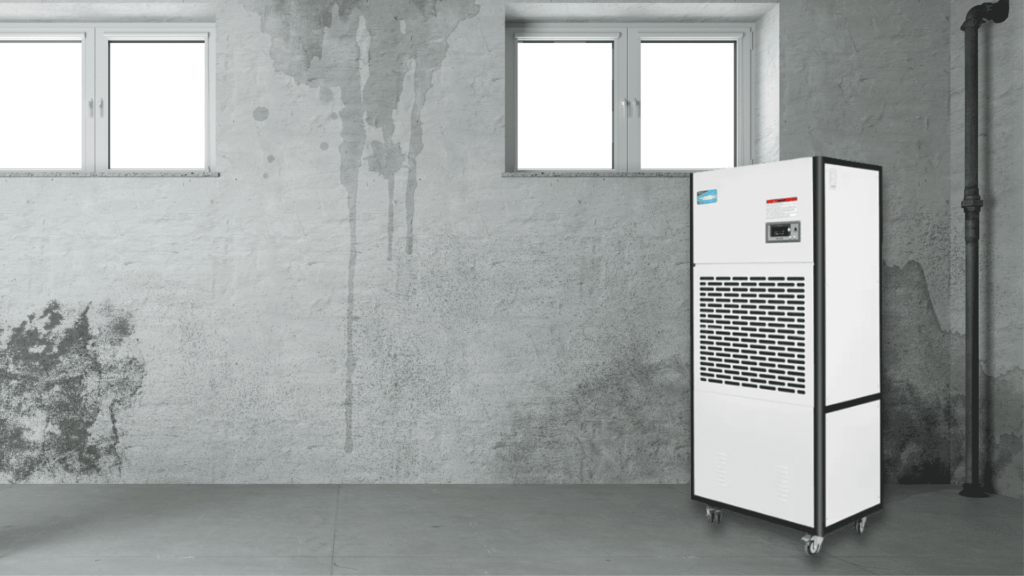
Effective Dehumidifiers for Ducted Basements
If your basement has the option to install duct dehumidifiers, it will be great to utilize this opportunity. It will save the floor area of your basement. They come with some smart features such as Memory Start, Auto Defrosting, Automatic Humid Controlling, etc. Here are some of the dehumidifiers that you can install in your basement-
| Model | Dehumidifying capacity | Power Supply | Air volume | Rated Power | Area(recommend) | Net Weight |
| YCD-26E | 26L/D; 55Pints/D | 1) 220V-1P-50Hz; 2)110V-1P-60Hz | 350m3/h | 400W | up to 30m2 | 20kg |
| YCD-38E | 38L/D; 80Pints/D | 800m3/h | 705W | up to 50m2 | 38kg | |
| YCD-58E | 58L/D; 125Pints/D | 800m3/h | 910W | up to 70m2 | 40kg | |
| YCD-90E | 90L/D; 190Pints/D | 1000m3/h | 1160W | up to 120m2 | 45kg | |
| YCD-138E | 138L/D; 290Pints/D | 1000m3/h | 1450w | up to 150m2 | 47kg | |
| YCD-7S | 168L/D; 355Pints/D | 1) 380V-3P-50Hz; 2) 220V-3P-60Hz | 2000m3/h | 2800W | up to 200m2 | 105kg |
| YCD-10S | 240L/D; 507Pints/D | 2500m3/h | 3500W | up to 260m2 | 115kg | |
| YCD-15S | 360L/D; 760Pints/D | 3800m3/h | 5700W | up to 350m2 | 150kg |
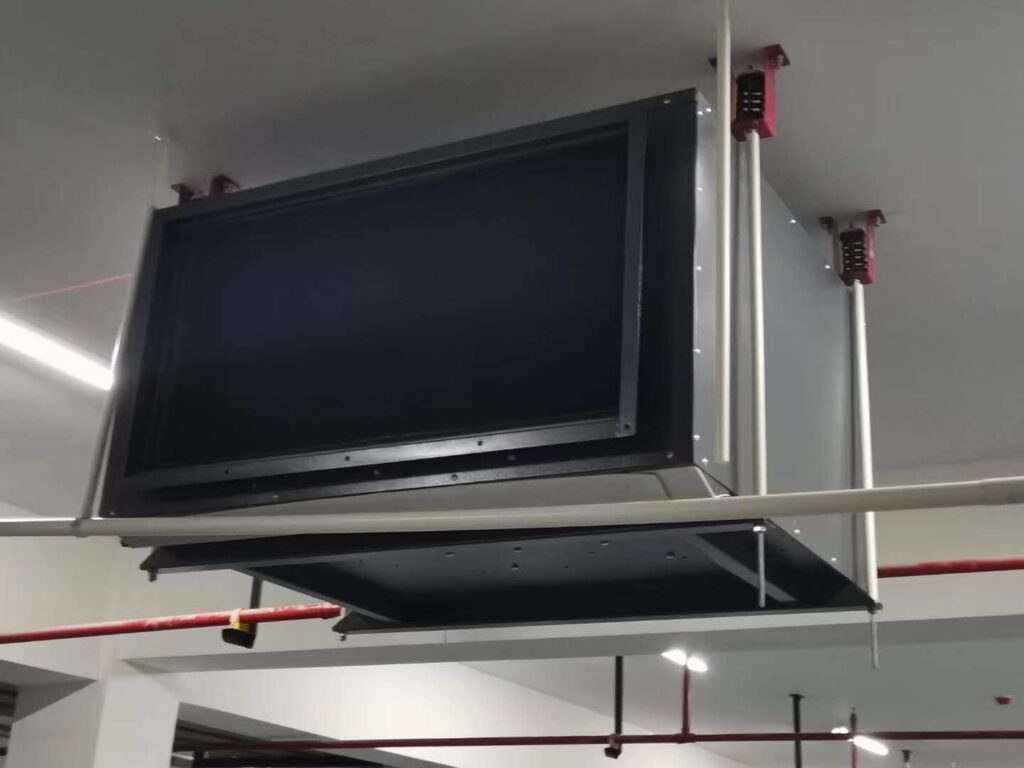
Final Verdict
After all, basement ventilation is not just about creating vents to allow outside air into the basement. Rather, it’s a strategic process to create a pathway for airflow. Sometimes, natural ventilation will be sufficient to handle it.
Other times, simply installing exhaust fans may be enough. Alternatively, you might need to install a dehumidifier to ensure a fresh environment inside. Consider your basement type first, then choose the best option to protect your investment.
I hope this discussion helps. Good luck!

